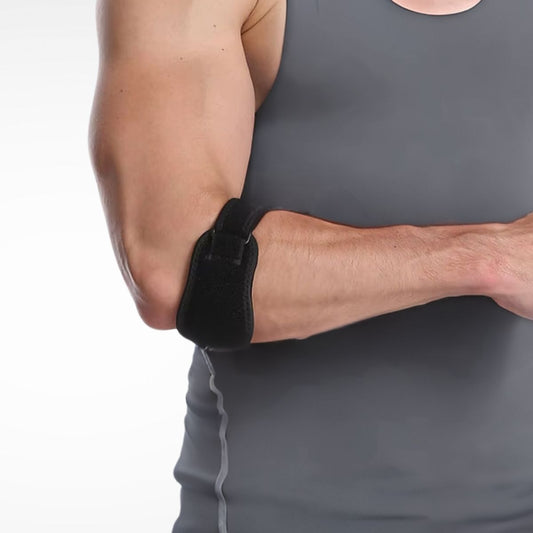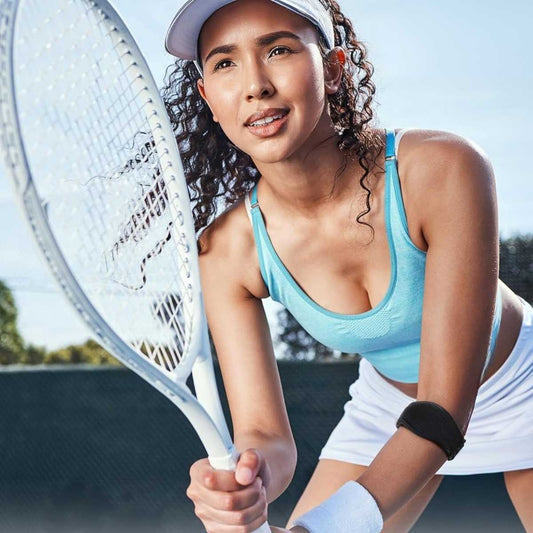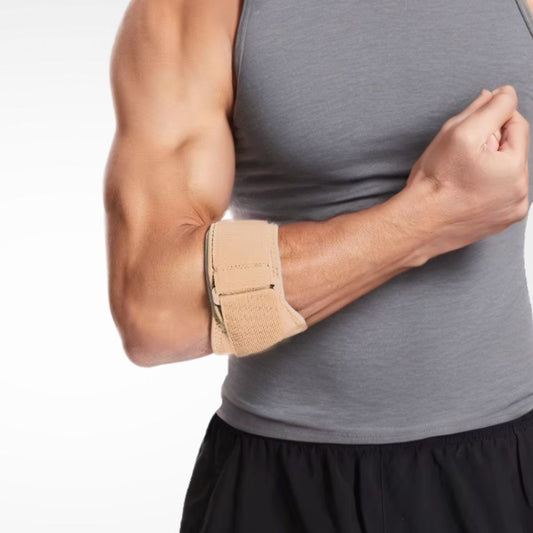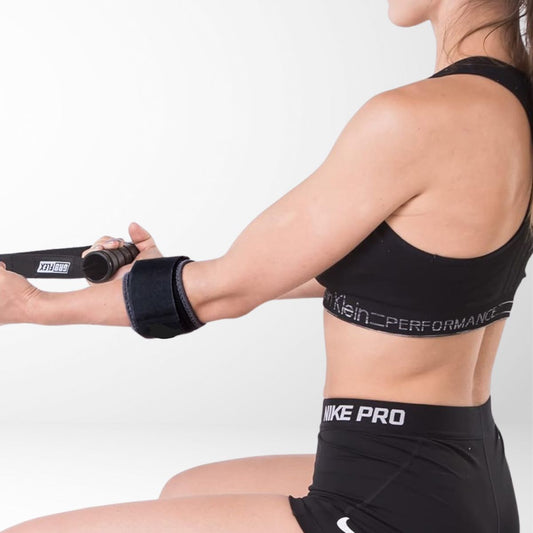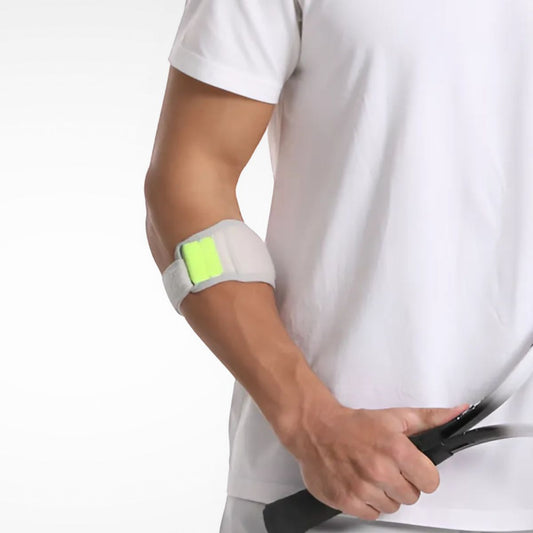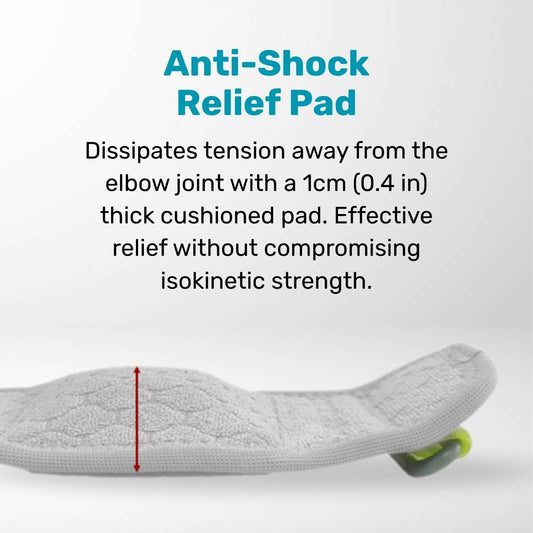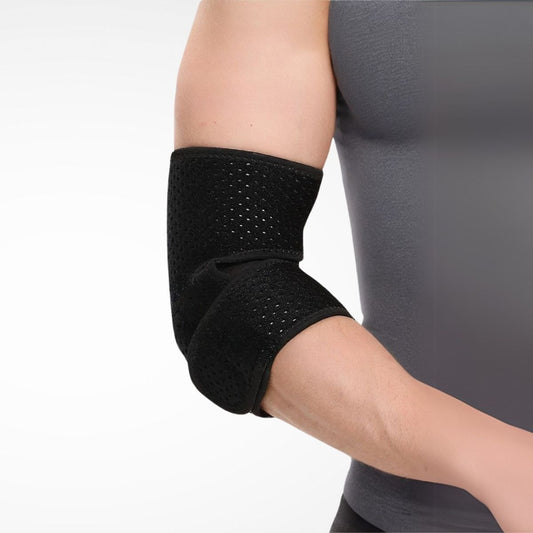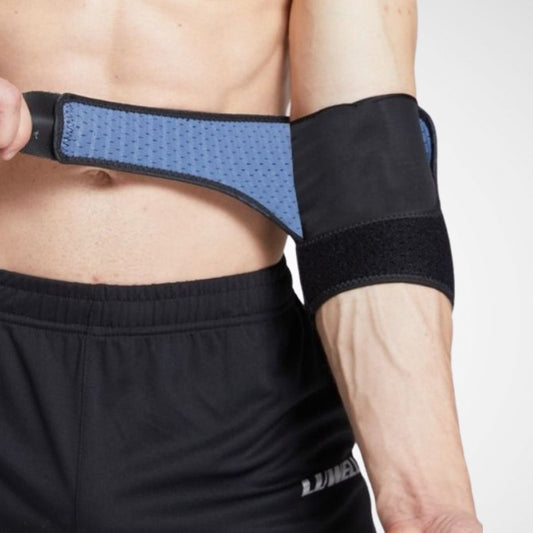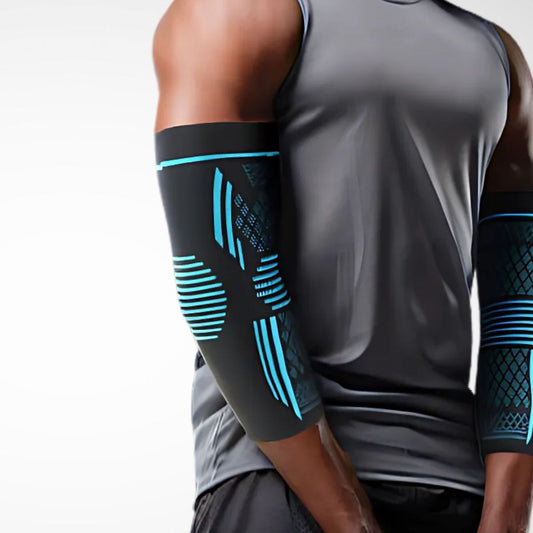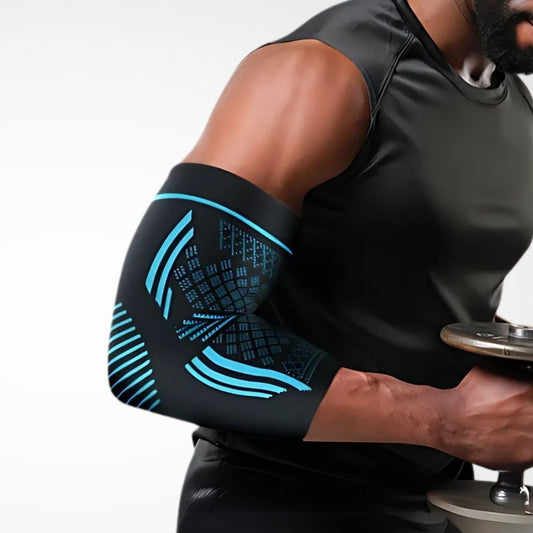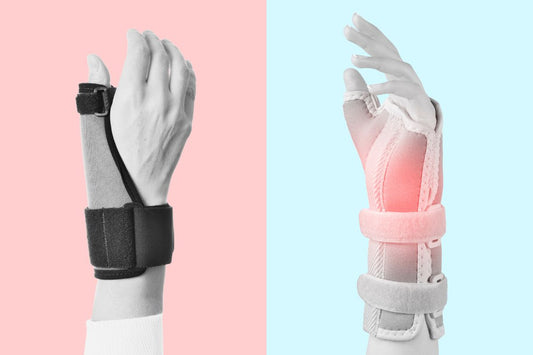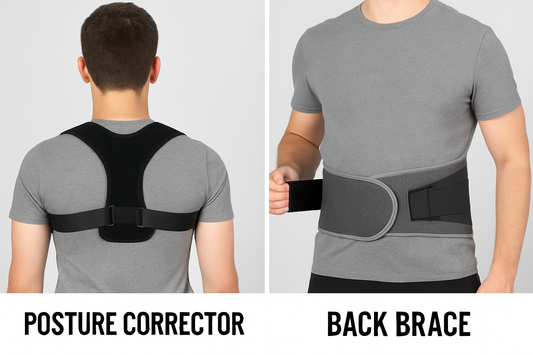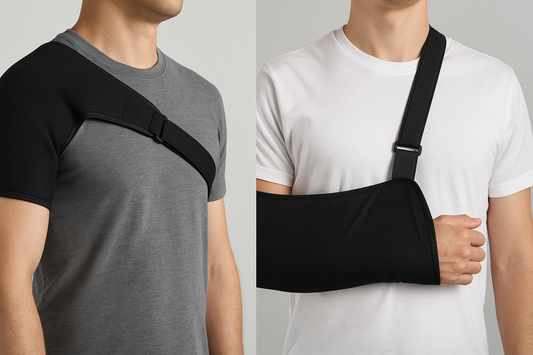Pickleball has become one of the growing sports around the world, especially among adults looking for a fun, low-impact activity. But with that rise has come a spike in overuse injuries — one of the most common being pickleball elbow.
If you’re feeling a persistent ache or sharp pain around your outer elbow after playing, you’re not alone. In this article, we’ll explain what pickleball elbow is, what causes it, and what you can do to relieve and prevent it — with an honest look at both home remedies and supportive tools.
What Is Pickleball Elbow?

Pickleball elbow is another name for lateral epicondylitis, more commonly known as tennis elbow. Despite the name, it doesn’t only affect tennis players. It’s caused by repetitive strain to the tendons that connect the forearm muscles to the outside of the elbow — especially from gripping and wrist extension movements.
In pickleball, these motions often come from:
- Repetitive swinging and flicking of the paddle
- Poor grip technique or paddle control
- Playing long sessions without adequate rest or conditioning
Symptoms of Pickleball Elbow

You might be dealing with pickleball elbow if you notice:
- Pain on the outer elbow, especially when gripping or lifting
- Aching that worsens during or after play
- Weak grip strength
- Discomfort when twisting the forearm (e.g. opening jars)
Treating Pickleball Elbow Effectively
1. Rest and Ice (Reduce Strain and Calm Inflammation)
It’s not flashy, but rest and ice remain two of the most reliable ways to manage elbow pain in the short term — especially in the first few days of discomfort.
- Rest: Avoid repetitive gripping, wrist extension, and pickleball play for a few days. Switch to lower-strain activities to give the tendon time to recover.
- Ice: Apply a cold pack to the outer elbow for 15–20 minutes, 2–3 times daily. This can reduce inflammation and help with pain.
Even though this combo won’t fix the deeper cause, it gives your body a chance to catch up and start healing.
2. Improve Technique and Equipment
While proper rests are essential for recovery, many cases of pickleball elbow stem from subtle issues in form or gear. Addressing these root causes can help prevent the injury from coming back.
Tip 1: Grip Technique Matters More Than You Think
Gripping your paddle too tightly is one of the most common causes of tendon overload. This unconscious tension puts excessive stress on the forearm muscles — especially during quick strokes, dinks, and volleys.
Instead, try loosening your grip just slightly and allow the paddle to “breathe” in your hand. It may feel less secure at first, but it will drastically reduce stress on your tendons. A coach can help correct grip mechanics, wrist positioning, and follow-through motion.
Tip 2: Use the Right Paddle — Not All Are Equal
Cheaper or worn-out paddles may have poor vibration or shock dampening, leading to more impact transferred to your elbow on every shot.
Look for:
- Ergonomic handles designed to reduce wrist torque
- Shock-absorbing core material (e.g. polymer or composite)
- Appropriate weight — heavier paddles may reduce elbow stress for some, while lighter paddles help with control and speed
Testing different options is worthwhile if you're prone to elbow pain.
Tip 3: Change Your Paddle Grip When Needed
Over time, grips wear down and lose cushioning, increasing hand fatigue and tension. If your grip feels thin or slippery, it may be time to replace it or use an overgrip for more control and padding.
Poor paddle grip or improper stroke mechanics can worsen the strain. Consider consulting with a pickleball coach or trainer if you suspect yourself to have improper form.
3. Use a Tennis Elbow Brace (Yes — It Works for Pickleball Too)

If you need to stay active or want support during your return to play, a tennis elbow brace can help reduce strain on the affected tendon.
The brace works by applying counterforce pressure slightly below the elbow, helping offload tension from the inflamed area. It doesn’t cure the condition, but it can effectively alleviate the pain of pickleball elbow — especially during daily tasks, light training, or physical therapy.
Some players prefer a compression sleeve instead, which can reduce swelling and provide gentle all-day support.
4. Rebuild Strength with Rehab Exercises and Stretches

Once pain has calmed, rehab exercises are critical for long-term recovery and prevention. Strengthening the forearm muscles improves tendon resilience and reduces reinjury risk.
Start with:
- Wrist extensor and flexor stretches
- Eccentric wrist curls using light weights
- Grip exercises with a soft ball or putty
- Forearm massage or self-myofascial release
A physical therapist can help guide your progression and identify any biomechanical issues in your playstyle.
When to See a Doctor
If the pain persists for more than a few weeks, worsens despite rest, or starts interfering with your daily life, it’s time to consult a healthcare provider. Chronic tendon issues may require more advanced treatment like corticosteroid injections, shockwave therapy, or imaging for accurate diagnosis.
Final Thoughts

Pickleball elbow isn’t just a sore arm — it’s a real overuse injury that needs proper care. The good news? Most cases can be managed at home with a thoughtful approach:
- Rest and ice in the early phase
- Technique and equipment corrections
- Use a tennis elbow brace if needed for support
- Rehab exercises to rebuild and prevent future injury
Taking the time to heal now can mean many more years of play ahead — pain-free.


